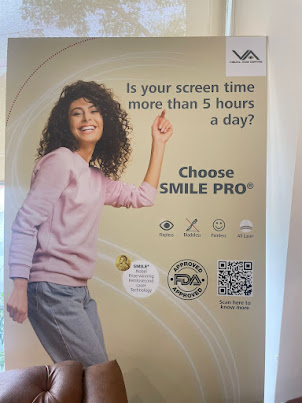Is Smile Pro Eye Surgery Safe?
Explore the safety and effectiveness of SMILE Pro eye surgery, a revolutionary approach to vision correction.
SMILE Pro eye surgery, also known as Small Incision Lenticule Extraction, is gaining popularity in the world of vision correction for its minimally invasive approach. An understandable apprehension arises when considering any form of surgery, let alone one that involves your eyes. But is SMILE Pro eye surgery safe? This is a question we hear often. To address this, let's delve into the studies and facts behind this innovative technique, examine the results, and assess the risks associated with SMILE Pro. In this guide, we aim to provide a clear and thorough understanding of the safety aspect of this procedure, helping you make an informed decision. Remember, your eyesight is precious, and the right knowledge is key to safeguarding it.
Understanding the Safety of Smile Pro Eye Surgery
SMILE Pro is a minimally invasive laser eye surgery procedure that is considered to be very safe. It is a newer procedure than LASIK, but it has quickly gained popularity due to its excellent safety profile. Like any surgical procedure, there are some risks associated with SMILE Pro, but these risks are very low.
SMILE Pro has been shown to be safe and effective in multiple clinical studies. A 2021 study published in the journal found that SMILE Pro was associated with a very low rate of complications, with only 0.1% of patients experiencing a serious adverse event.
Another 2021 study found that SMILE Pro was as safe and effective as LASIK for the correction of nearsightedness (myopia). The study also found that SMILE Pro was associated with a lower risk of dry eyes than LASIK.
Is SMILE Pro FDA Approved?
Yes, SMILE Pro (Small Incision Lenticule Extraction) is FDA-approved for the correction of myopia, or nearsightedness, in adults 22 years of age or older with a prescription between -0.5 to -10.00 diopters (D) of spherical equivalent (SE) with up to -0.75 D of astigmatism. It was approved by the U.S. Food and Drug Administration (FDA) in 2016.
SMILE is a minimally invasive laser eye surgery procedure that uses a femtosecond laser to create a small incision in the cornea and then extract a thin lenticule of corneal tissue. The procedure is flapless, meaning that it does not require the creation of a corneal flap, which can reduce the risk of complications.
SMILE has been shown to be as effective as LASIK for the correction of myopia, and it may have some advantages over LASIK, such as a shorter recovery time and a lower risk of dry eyes.
Does SMILE Pro Utilize Robotic or AI Technology, and Does This Enhance Safety?
SMILE Pro incorporates both robotic and AI-based technology. The femtosecond laser used in SMILE Pro is controlled by a computer program that uses AI algorithms to plan and execute the laser treatment precisely. This helps to ensure that the laser is applied with the utmost accuracy and precision, which can lead to better visual outcomes and a lower risk of complications.
In addition, the SMILE Pro system has a built-in eye tracker that can track the movement of the patient's eye during the procedure. This allows the laser to adjust its position in real-time, ensuring that the laser treatment is always applied to the correct location on the cornea. The eye tracker also helps to prevent the laser from accidentally treating the wrong area of the cornea, which can lead to complications.
The use of robotic and AI-based technology in SMILE Pro can make the procedure safer and more effective for patients. The precision of the laser treatment and the use of the eye tracker can help to reduce the risk of complications and improve visual outcomes.
Here are some of the benefits of using robotic and AI-based technology in SMILE Pro:
- Improved accuracy and precision
- Reduced risk of complications
- Better visual outcomes
Comparing SMILE Pro's Safety Profile to Other Procedures
When evaluating the safety of SMILE Pro, it's useful to compare it with other popular vision correction procedures, such as LASIK and PRK.
LASIK is indeed an effective and generally safe procedure, but it involves creating a corneal flap, which may lead to some specific complications, such as dry eyes and flap displacement. On the other hand, SMILE Pro's flapless design minimizes these risks.
PRK (Photorefractive Keratectomy), another commonly performed procedure, does not involve creating a corneal flap, similar to SMILE Pro. However, the recovery time is typically longer with PRK as the surface layer of the cornea needs time to heal. Conversely, SMILE Pro offers a quicker recovery time, typically within a few days.
The use of AI and robotic technology in SMILE Pro not only enhances precision but also adds an additional layer of safety. This technological edge, coupled with the promising results from clinical studies, proves that SMILE Pro holds a competitive safety profile when compared to other eye surgeries.
While each procedure has its benefits and potential risks, SMILE Pro comes out on top in terms of safety, effectiveness, and recovery time. Nevertheless, the choice of procedure should always be individualized, based on the detailed examination and discussion with your eye surgeon.



Comments
Post a Comment